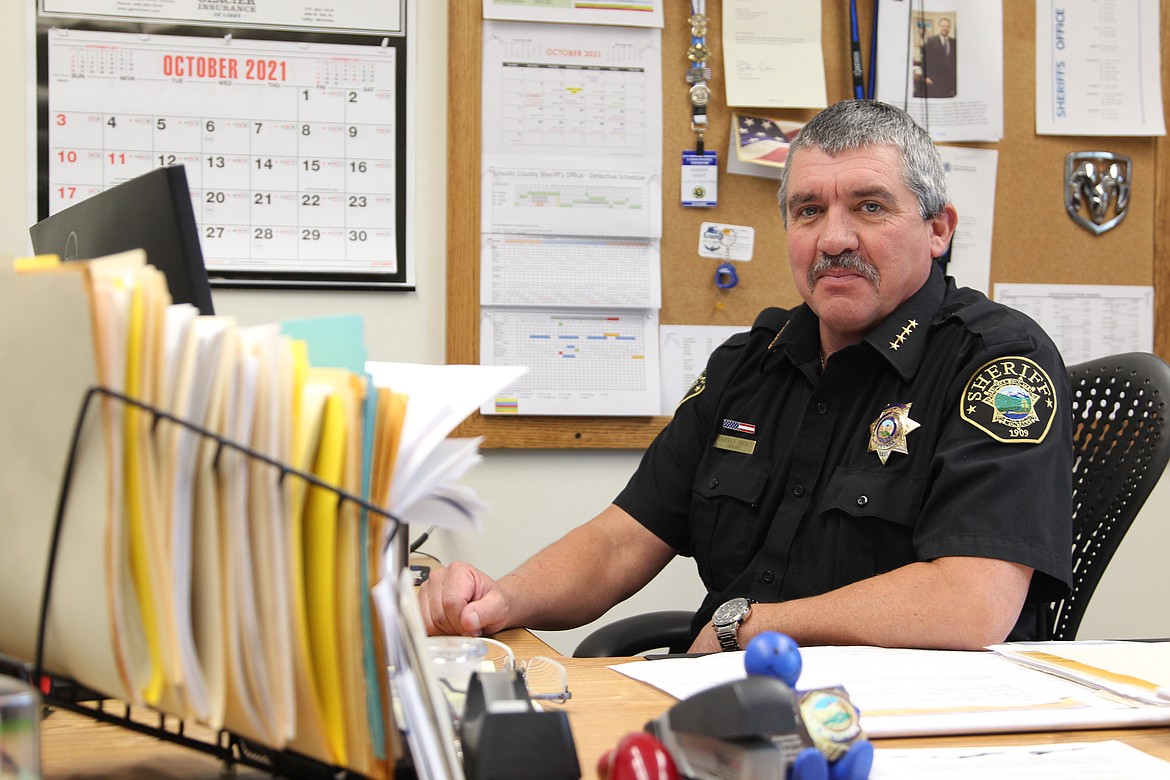Law enforcement could face lean years ahead as federal pandemic funds run dry
Buoyed by federal coronavirus relief funds, Lincoln County officials financed a roughly $400,000 increase in public safety spending this fiscal year while lowering law enforcement’s reliance on local tax dollars.
But with the sheriff’s office budget steadily rising over the years and continued pandemic aid uncertain, officials have raised concerns about where to find dollars for future increases.
“Last year we got quite a bit of COVID money and were able to do some things,” said County Commissioner Jerry Bennett (D-2) after budget talks on Sept. 1. “If that’s not available, then it's no more different than [budgeting for] your house. Unless you want to run to the bank and borrow money — and we don’t have a bank to run to.”
At just over $4.94 million, public safety spending makes up 43 percent of the county’s operating budget this fiscal year. The department’s anticipated expenses have roughly increased $290,000 on average over the past four years, from $3.78 million in fiscal year 2018.
One of the most significant increases in public safety spending over the past year has come from staffing costs. The county allocated $2 million in public safety salaries and wages last year and $2.4 million this year. With the county offering regular cost of living increases, these expenses are unlikely to decrease in coming years.
“It’s definitely going to be one thing we heavily assess next year,” said County Commissioner Brent Teske (D-1) on Oct. 1. As a recent addition to the board of commissioners, Teske caveated his statement saying he wasn’t involved in early budget talks with the sheriff’s office this year.
Sheriff Darren Short said his office’s hands were largely tied when it comes to wage and salary increases.
“There’s really nothing we can do about the cost of salaries and benefits,” said Short during an Oct. 6 interview. “It’s going to continue to increase as it has in previous years.”
Eventually, the sheriff’s office will have to hire more deputies, Short said. Spanning over 3,600 square miles, Lincoln County is roughly three times the size of Rhode Island. To cover this area, public safety has 21 sworn positions including the sheriff, the undershiff and an animal control officer.
“We’re going to have to increase,” said Short. “We’re basically going to have to have resident deputies at all corners of the county if people expect to have any kind of timely response.”
A major spending priority for the sheriff’s office this year will be replacing aging vehicles. As of Oct. 6, 75 percent of the office’s patrol fleet had over 100,000 miles on the odometer. While law enforcement officials had planned to purchase two new vehicles every year, they only bought one in 2019 and one in 2020.
“If we can’t get to a scene when someone calls, there’s a problem,” said Short.
The machinery and equipment line item under the crime control and investigation portion of the public safety budget rose from $90,000 last year to $310,000.
When trying to balance the county budget last year, an increase of just over $300,000 in proposed public safety spending created a headache for officials. With commissioners facing a $670,000 shortfall in late August, officials with the sheriff’s office said there wasn’t much they could trim from their proposed $4.57 million budget.
“You guys, right now, are at 98 mills and that leaves basically six mills to run the rest of the county,” said Bennett in an August meeting last year.
Officials ultimately cut $200,000 in proposed funding among the county’s departments, $33,897 of which came from the sheriff’s office. County coffers also saw a last-minute influx of $472,606 from the federal Coronavirus Aid, Relief and Economic Securities (CARES) Act.
Thanks to the inflow of pandemic funds, budget talks went much more smoothly this year. The CARES Act dollars the county received reimbursed wages and salaries for sheriff’s office, detention, dispatch and health department staff, according to Wendy Drake, head of the county finance department.
The federal funds allowed the sheriff’s office to use monies that would have otherwise gone to paying personnel last year to cover costs in this year’s budget. The carry over is reflected in the amount of cash on hand the county set aside for public safety spending. Officials reported just under $567,000 in available cash last year compared to $1.3 million this year.
The leftover funds meant the county had to draw fewer tax dollars to support public safety. Last fiscal year, the county set aside nearly $3.17 million in property revenues for the department. The figure dropped to $2.8 million this year.

